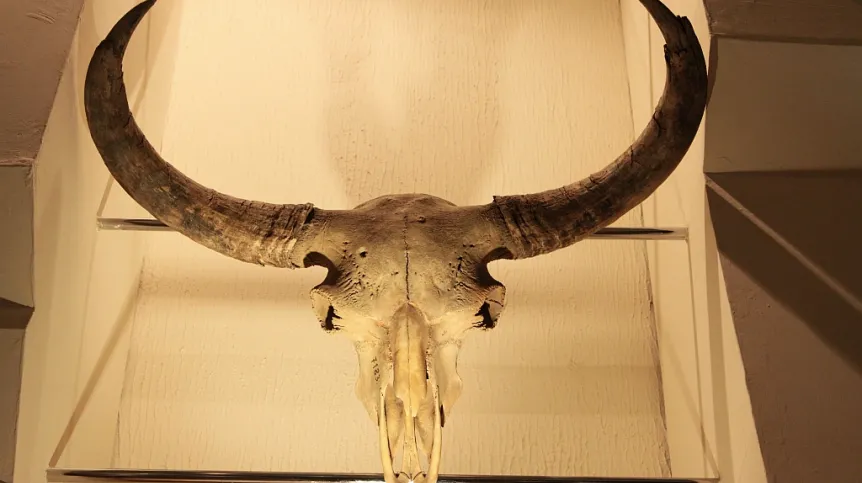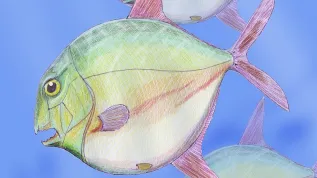
Steppe bison disappeared from Europe at the end of the Ice Age. Why did this happen, and before that - how was life of this species in Poland and Europe? The Mammal Research Institute PAS in Białowieża launches a research project focusing on one of the last representatives of the Pleistocene megafauna.
New facts, among others, about the steppe bison diet and the conditions in which it lived thousands of years ago, will be discovered in the project launched by the Mammal Research Institute PAS in Białowieża. This information will also expand the knowledge about the effects of climate change and environmental changes on the extinction of large herbivorous mammals. As part of the project, the researchers will study the bones and teeth of the prehistoric bison found in Europe (including Poland) and north-eastern Siberia.
The project (No. 2015/17/N/ST10/01707), funded by the National Science Centre in the competition Prelude, will be led by Emilia Hofman-Kamińska.
And what do we known now about the extinct cousin of modern bison? Steppe bison (lat. Bison priscus), also called steppe wisent, together with mammoth, woolly rhinoceros and giant deer was one of the last large herbivores, which survived in Europe until the end of the Ice Age. It was the period called the Pleistocene, which lasted from approx. 2.5 million to 11.7 thousand years ago, then gave way to the next, warmer era in which we live today (Holocene).
Steppe bison was a regular part of the steppe landscape of the northern hemisphere. Found bones show that during the middle and late Pleistocene (781 thousand - 11.7 thousand years ago) steppe bison range included areas from Spain through the Eastern Europe, the Ural Mountains, Siberia, Beringia (the land bridge connecting Asia and North America during the glaciations) - to the American continent. This is confirmed by petroglyphs preserved in the caves of Spain (eg. the famous Altamira), France (caves Chauvet and Niaux), Italy and Romania. The massive figures of the animal appear on the walls of caves among other representatives of glacial fauna: horses, reindeer, woolly rhinoceros, wild boar, bears and cave lions.
It is believed that modern bison is related to the steppe bison and one of the species of the genus Bos, "Bison and steppe bison share a similar body structure and proportions, but steppe bison had slightly thicker and longer horns than its modern cousin. It was also 5-10 percent larger than modern bison. We know that from measurements of discovered skull and skeletal bones" - said Emilia Hofman-Kamińska.
Steppe bison became extinct in the late Pleistocene, although their slow extinction started earlier; in north-east Asia, this process has started already about 50 thousand years ago, before man appeared there. "Therefore, our species should not be considered the main perpetrator of the extinction of this large herbivore, although opinions on this subject divide scientists and certainly the causes of the extinction of steppe bison on a regional scale should be examined separately" - said the researcher.
It is estimated that the beginning of extinction of steppe bison in North America began 37 thousand years ago, at the beginning of the last glaciation on the continent. Recent data suggest that steppe bison survived the longest in northern Siberia (to approx. 15-12 thousand years ago). The youngest known steppe bison specimen dates back to about 9.9 thousand years ago - its remains were found in the Popigai river basin in the Krasnoyarsk Krai in Russia. In Europe, the youngest Bison priscus specimens to date (dating back 17.6 thousand years) were found in the Habarra cave in southern France.
Steppe bison bones are not as rare in Poland, as previously thought - noted Emilia Hofman-Kamińska. In the Polish collections, museums and research institutions there are more than 70 bone fragments of skulls or skeletons of this species (mentioned in various publications). Probably there are more, because not all specimens have been the subjects of publications and media reports. Magnificent skulls and fragments of horns have been found in river beds and valleys of the Vistula, San, the Odra and Warta, but also in the caves on the Krakow-Czestochowa Jura and in the Kłodzko Valley.
Despite numerous discovered steppe bison bone fragments, its history and paleoecology in Poland and Europe has not yet been sufficiently explored - noted biologist from the Mammal Research Institute PAS.
The institute\'s recent research project may shed new light on this subject. "We will find out exactly when these animals lived, what type of plants dominated in their diet - grassy or sprout, and what type of environment they chose at different times of the changing climate: more open or overgrown with trees and shrubs" - said Emilia Hofman-Kamińska.
Researchers will look for information in the fossil bones and teeth of steppe bison. They will determine the age using radiocarbon or uranium-thorium dating. The content analysis of the stable isotopes of carbon and nitrogen will allow to determine the diet of animals and their habitat. 3D analysis of the structure of microtraces on the tooth surface will also help in the reconstruction of the diet.
The project is scheduled for three years. As part of the pilot research at the institute (the first and to date only analysis of the age of the bones of this species in Poland), researchers have already determined the exact age of three specimens of steppe bison using the radiocarbon method. We know that they lived in the period between 47 thousand and 36 thousand years ago.
It is widely believed that the diet of this species was typically grassy. However, the results of pilot research at the institute showed that shoots of trees and shrubs were an important part of the diet of animals in Poland and Switzerland. In the stomach of well-preserved mummy of steppe bison (discovered in the permafrost in Siberia in 2011) scientists detected grasses, sedges, and herbaceous plants, as well as the shoots of trees: willow, birch and alder.
"Perhaps with the dissemination of knowledge about steppe bison we will see a new hero in the next part of the popular Ice Age animation series" - said the project leader.
PAP - Science and Scholarship in Poland
zan/ mrt/
tr. RL













